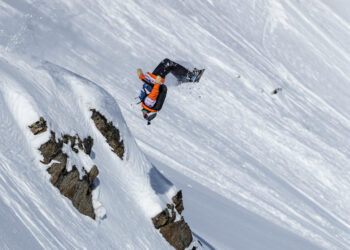By Kris Inman EBS CONTRIBUTOR
Welcome to the spring, the days are getting longer, the temperatures warmer, drawing us outside. Bears too are feeling these changes, and between February and May, bears emerge from their dens.
Between February and May is a wide range for bears to emerge from their winter slumber. Why the variation? Weather, reproductive status and food play a role. In mild years, with low snow, bears emerge earlier. Males and females without cubs are the first to emerge; females with cubs the last. In years with an abundance of natural foods or in communities where trash is regularly available, some bears, as noted in the December column, may not den and actually take advantage of a readily available food source.
Contrary to popular belief, bears don’t awaken from their dens in desperate need for food. As bears emerge from their den’s they are undergoing several physiological changes: their body temperature, heart rate and metabolic rate is gradually returning to normal. They will rest periodically as everything gears back up, move slowly, and begin looking for food.
As bears begin moving around Big Sky, some will be at different stages of “rebooting” after their winter’s sleep. It is a good time for you to gear back up and minimize your chance of having a negative encounter with a bear.
Bears, for the most part, avoid people. But when they become accustomed to people after having regular access to trash, they become bolder around people.
To keep bears wild, use a bear-resistant trash can. Never store food or trash outside or in an unlocked car or bed of your truck. Feed pets inside. Keep your garage doors closed. Taking these bear-smart actions will help keep yourself, your property and bears safe.
If you see a bear, do not approach it. Always keep your distance. Move away slowly and have bear spray handy and ready to use. Know how to use bear spray, and look for bear spray training sessions at the farmer’s market this summer and events throughout the season.
Most of Big Sky home-owners associations and businesses have pledged to be bear smart. The Big Sky Community Foundation, Big Sky Homeowners Association, Big Sky Resort, Fire Light Meadows, Moonlight Basin, Spanish Peaks Mountain Club, Big Sky Town Center and Yellowstone Club require bear-resistant trash cans. Gallatin Canyon homes and businesses are also required to use bear-resistant trash receptacles or keep it in a secured building. It takes a village and everyone in the community doing their part to be bear smart and keep Big Sky wild.
Visit fwp.mt.gov/recreation/safety/wildlife/bears for more about bear safety.
Kris Inman is a wildlife biologist who’s spent more than two decades studying black bears and wolverines. She leads the Wildlife Conservation Society’s Strategic Partnerships Program where she takes science to community-led conservation action. Visit wcscommunitypartnerships.org/bear-smart to learn more.
—
BEAR BASICS
- Use a bear-resistant trash can
- Never store food or trash outside, in an unlocked car or in the bed of a truck
- Feed pets inside
- Keep garage doors closed
- Keep your distance from bears
- Know how to use bear spray















